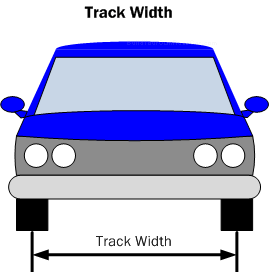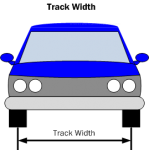Functional Artist
Well-known member
Thinkin' of buildin' a Formula SAE style/type of a kart 
" Formula SAE is a student design competition organized by SAE International (previously known as the Society of Automotive Engineers, SAE). The competition was started in 1980 by the SAE student branch at the University of Texas at Austin after a prior asphalt racing competition proved to be unsustainable.
The concept behind Formula SAE is that a fictional manufacturing company has contracted a student design team to develop a small Formula-style race car. The prototype race car is to be evaluated for its potential as a production item. The target marketing group for the race car is the non-professional weekend autocross racer. Each student team designs, builds and tests a prototype based on a series of rules, whose purpose is both ensuring on-track safety (the cars are driven by the students themselves) and promoting clever problem solving. The prototype race car is then, judged in a number of different events."

 en.wikipedia.org
en.wikipedia.org
"Electric Vehicles
A separate class for electric vehicles was introduced back in 2010 in order to prepare prospective young engineers for future technologies such as electric drivetrains and in order to advance the innovation process. This class focuses on ecological aspects without dropping the attractiveness of a sporty style of driving. It is a quite remarkable fact that the fastest electric vehicles cars already provide equal performance compared to the best race cars with combustion engines. After having built three Formula Student cars with conventional combustion engines, the team switched to the newly established electric class and managed to compete among the top teams right from the start.
Events
A Formula Student competition consists of so-called static and dynamic disciplines. In the static events the engineers have to present their car and their development process to well-known judges from the economy, the automotive industry and prestigious racing series like Formula One. Disciplines being judged are:
 www.electric.amzracing.ch
www.electric.amzracing.ch
Something like these
...
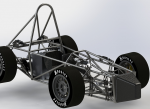
" Formula SAE is a student design competition organized by SAE International (previously known as the Society of Automotive Engineers, SAE). The competition was started in 1980 by the SAE student branch at the University of Texas at Austin after a prior asphalt racing competition proved to be unsustainable.
The concept behind Formula SAE is that a fictional manufacturing company has contracted a student design team to develop a small Formula-style race car. The prototype race car is to be evaluated for its potential as a production item. The target marketing group for the race car is the non-professional weekend autocross racer. Each student team designs, builds and tests a prototype based on a series of rules, whose purpose is both ensuring on-track safety (the cars are driven by the students themselves) and promoting clever problem solving. The prototype race car is then, judged in a number of different events."

Formula SAE - Wikipedia
"Electric Vehicles
A separate class for electric vehicles was introduced back in 2010 in order to prepare prospective young engineers for future technologies such as electric drivetrains and in order to advance the innovation process. This class focuses on ecological aspects without dropping the attractiveness of a sporty style of driving. It is a quite remarkable fact that the fastest electric vehicles cars already provide equal performance compared to the best race cars with combustion engines. After having built three Formula Student cars with conventional combustion engines, the team switched to the newly established electric class and managed to compete among the top teams right from the start.
Events
A Formula Student competition consists of so-called static and dynamic disciplines. In the static events the engineers have to present their car and their development process to well-known judges from the economy, the automotive industry and prestigious racing series like Formula One. Disciplines being judged are:
- ENGINEERING DESIGN Judgement of technical aspects, the construction and key attributes of the car.
- COST Financial planning of the whole car, including manufacturing.
- BUSINESS PLAN Presentation in order to convince a potential investor of a profitable business idea using the self-developed race car.
- ACCELERATION An acceleration race over 75m distance with a standing start.
- SKID PAD Cornering on a track shaped like an eight to test the lateral acceleration of the car.
- AUTOCROSS Qualifying for the Endurance, the fastest lap time wins.
- ENDURANCE & EFFICIENCY An endurance race over 22km distance, including one driver change. The Efficiency scoring rates the consumed amount of energy in relation to the total time."
Formula Student | AMZ Racing
Something like these
...




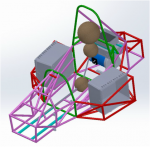
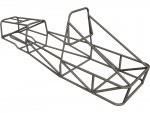



 to chew on
to chew on 